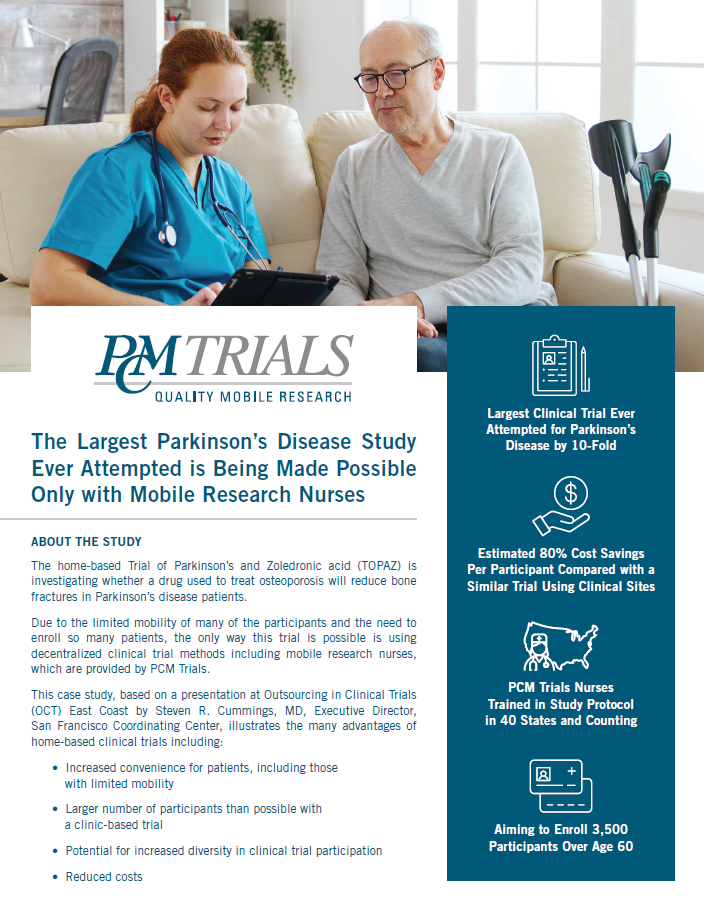Need to know:
- China is a tempting country to run clinical trials from due to its large pool of treatment-naïve patients and local experts. There have been regulatory moves to promote clinical trial activity.
- Yet, according to data analysis and expert interviews by Clinical Trials Arena, the country’s clinical trials industry is still mostly inward-looking with overseas sponsors yet to maximise their footprint in China. We reveal unique insights on overseas sponsors’ presence in China, point to obstacles in entering the country and if they are worth climbing over.
China’s increasing footprint in the clinical trials industry is hard to ignore. There are two sides to the story: how the local industry is fortifying its foundations to serve local sponsors, but also overseas sponsors looking to expand their clinical trial presence into the country.
But according to an investigation by Clinical Trials Arena based on our exclusive data analysis and interviews with experts, there is still a great wall that overseas-based sponsors need to overcome to establish local clinical trial connections. There are cultural and structural nuances that sponsors need to take heed of, and local experts, while plenty, may need more training in running certain aspects of clinical trials.
Data reveals that clinical research in China is still relatively insular, with only one in four commercial clinical trials in China sponsored by an overseas company. Specifically on single-country commercial trials in China, just 18% include any foreign commercial companies. This is in the context of this rate being 21% in South Korea, 30% in India, and 45% in Japan.
Multi-country trials are much more likely to include foreign involvement. Since the start of 2020, half of all multi-country trials with sites in China have included Western commercial sponsors. This is roughly in line with other non-Western countries—with Japan at 52%, South Korea at 56%, and India 64%. But multi-country trials are scarce in China, representing just 9% of all commercial trials, and this rate is 42% in South Korea and Japan.
How well do you really know your competitors?
Access the most comprehensive Company Profiles on the market, powered by GlobalData. Save hours of research. Gain competitive edge.

Thank you!
Your download email will arrive shortly
Not ready to buy yet? Download a free sample
We are confident about the unique quality of our Company Profiles. However, we want you to make the most beneficial decision for your business, so we offer a free sample that you can download by submitting the below form
By GlobalDataBut there are many reasons for overseas sponsors to keep persisting. China is an attractive clinical trial destination due to its large pool of patients and there is investment in improving local expertise and infrastructure in supporting clinical trials. Concerns about data integrity coming from the country are also being addressed.
As CRO Cisema COO Hamish King puts it, the decision to open a drug or medical device clinical trial in China is simple—it is a mostly mandatory requirement to sell a product locally. And as a business strategy, China would be a tough one to skip over.
China has opportunities for further growth
The involvement of Western commercial companies in trials run in China has grown gradually over the past decade—from around 100 trials per year in 2010 to around 350 in 2021, according to our analysis using the GlobalData Clinical Trials Database. GlobalData is the parent company of Clinical Trials Arena.
In addition, two in every 10 single-country China trials with a Western commercial sponsor are Phase III studies, compared to 12% for trials occurring in the West. Nonetheless, while Western companies are slowly creeping into China, growth in commercial trial activity in the country is still driven by local companies.
Between 2017 and 2021, 8% of single-country trials in China with Western commercial involvement were for immuno-oncology, compared to just 3% of single-country trials in Western countries. Other therapy types that make up a greater proportion of Western trials in China than trials in the West include autologous therapy (5% versus 2%) and CAR-T therapy (5% versus 1%).
Clinical investigation of certain therapy classes in China is rare, except when a Western commercial company is involved. For example, just 1% of single-country trials in China involve anti-inflammatory drugs, compared to 5% of single-country trials in China with a commercial Western sponsor. This is also the case for steroid therapy (0.6% versus 4%) and synthetics (0.5% versus 4%).
Multi-country trials in China for haematological disorders and respiratory disease are more likely to include commercial Western sponsors (78% and 66%, respectively). But these therapy areas also see above-average Western involvement in multi-country trials in Japan (71% and 58%) and South Korea (72% and 55%), even if at slightly lower levels than China.
Trends in China regulatory approvals
IQVIA clinical project management senior director Yuanjing Xu points to treatments approved by China’s Center for Drug Evaluation (CDE) in 2020, noting that the country has mostly approved class 1 innovative chemical drugs, with 694 total treatments approved. Specifically, oncology, anti-infective, and cardiovascular therapies are dominating areas of focus. In addition, there were also 500 biological products approved, with oncology, dermatology, and endocrinology being key therapy areas.
Our analysis shows that in recent years, a handful of prominent Western pharmaceutical companies have increased their activity in China. Novartis, for instance, has conducted 9% of its single-country trials in China since the beginning of 2016, compared to only 3% between 2010 and 2015. Roche has also increased its share of single-country trials in China, from 4.5% to 7.5%.
Apart from big pharma, several other companies based in the West have also begun to focus on China. Sandoz has conducted over 60% of its single-country trials since 2016 in the country. Meanwhile, over 90% of CRO Catalent’s collaboration on single-country trials have been with Western companies on trials based in China, particularly in oncology.
Why China as a trial destination?
There are several key reasons why clinical trial sponsors are intrigued by the possibility of opening and running clinical trials in China. Cisema’s King says the main driver is for the sponsor to sell a product locally. While it is possible to secure market approval without local data, it would be a challenging obstacle to overcome, he adds. Cisema focuses on China and the Hong Kong market.
Still, regardless of sponsor intentions in marketing locally, China data is desirable as a part of collective global data either for early development or a registrational trial, Xu notes.
It is not expensive to run clinical trials in China compared with other countries—even sponsors with a limited budget can run trials in China, says Cleveland Clinic professor Daniel Sessler. Patients in the area are seeing clinical trials as opportunities to access new therapies, and this can help accelerate recruitment, Xu adds.
Large pool of patients for trials
China has a large patient population who meet eligibility criteria and are treatment-naïve, Xu notes. Cleveland Clinic vice chair of research Dr Andrea Kurz says if the trial requires more than 5,000 patients, large hospitals in China become attractive. Sessler and Kurz are primary investigators in an ongoing non-small lung cell cancer trial that is only recruiting in Shanghai.
The country also has a robust clinical trial infrastructure, Xu notes. With many established clinical trial sites with skilled teams, robust network of experienced therapeutic experts, and advanced technologies in use, there is a sturdy foundation to support clinical trial operations successfully in China, he explains. Trials that are using remote, virtual, or decentralised methods have been increasing, and their use is accelerated during the Covid-19 pandemic, he says.
Focused on improving its regulatory system, China’s National Medical Products Administration (NMPA) has made updates to its product review and registration processes to help enhance efficiencies in drug development in the area, Xu says. Regulatory acceleration mechanisms from the NMPA, such as breakthrough and orphan designations, priority reviews, and reimbursement reforms, encourage earlier application and accelerate approval for innovations, he adds.
Covid impact on China trials
King says it has not been a challenge to run clinical trials in China in the past two years owing to the country’s zero-Covid approach. However, visiting on-site has been a challenge due to travel restrictions from overseas, Kurz notes.
The situation in certain major cities has changed in the past several weeks, with severe lockdowns imposed in Beijing and Shanghai to maintain its zero-Covid policy. King says impact on clinical trials is still filtering through. “The difficulty is that the lockdowns are in various areas, and you need someone in the area to manage the trial, or else someone would have to go into the zone but will have to do a two-to-three-week quarantine first.” At present, the lockdowns are seen as a short-term pause, he adds.
Clinical trial challenges in China
There are notable, long-term obstacles for clinical trial sponsors. There are cultural elements that sponsors need to be cognizant about, such as the language barrier, King notes. And while China has robust clinical trial infrastructure, he adds that the country has different organisational structures compared to ones overseas.
While there are local experts, investigators in China overall may have less clinical trial experience compared with the US and Europe, and so their ability to do the more complicated, technical aspects of a trial may be less, Sessler says, but notes: “Chinese investigators are smart, enthusiastic, and are eager to learn. They are interested to become major players, which makes them excellent colleagues.”
China is a growing pharma market. China’s pharma sales are forecast to grow by 4.04% in 2022 and 3.58% in 2023 to reach CNY1,477.9 billion ($217.8 million) in 2023, according to GlobalData. Growth is due to continued strong macro-economic growth even if at a progressively slower pace, rapid rise of wealthy and mid-income households, and government healthcare initiatives.
Yet its clinical trial system is still immature compared with other jurisdictions, King notes. “It wasn’t that long ago when trials with data in China were required for approvals there.” But it is a good sign that its clinical trials environment is developing and its regulatory environment becoming more harmonised, he adds.
FDA issues warning over China-only data
While running clinical trials in China may be attractive, solely collecting data from the country may not be ideal if the sponsor is looking to garner regulatory approval overseas. There have been high-profile FDA rejections this year, such as Eli Lilly and Innovent Biologics’s Tyvyt (sintilimab) in non-small cell lung cancer. In Tyvyt’s case, the FDA spelled out it did not meet its criteria regarding foreign data, and therefore recommended there to be a multiregional clinical trial. A China-only trial may not reflect US population diversity, as well as the US treatment landscape.
Experience with certain CROs can also be patchy. Kurz and Sessler had a negative experience with a CRO, with its staff not visiting sites as often. They had to depend on pre-forged local connections to make up the difference in monitoring.
Regulatory evolution attractive for trials
As for China’s regulatory landscape, there were key changes done in a bid to attract clinical trial sponsors. A primary reason for these regulatory changes is that there have been some drastic examples of contamination of drugs, and increasing awareness of this locally and at a global stage, King says.
Clinical trial quality in China has shown significant improvement since 2015, Xu notes. The NMPA’s Center for Drug Evaluation reinforced the inspections on data authenticity, integrity, and normative documents, he adds.
Since 2018, China has been a member country of the International Conference on Harmonization (ICH) to help harmonise and streamline global clinical trial conduct and help increase trial quality and efficiency. China has changed and applied 46 ICH guidelines by sharing announcements on the application. It also recommended implementation of ICH guidelines, publishing the Chinese version of the original ICH guidelines, Xu adds.
In addition, as an update on regulatory requirements and guidance in China, in July 2018, the NMPA officially issued the "Announcement on Adjusting the Review and Approval of Drug Clinical Trials," and the clinical trial approval system was officially replaced by the acquiescence system, which significantly shortens the IND approval timeline to three months.
Further, since the Regulation on Human Genetic Resources went into effect in 2019, multinational pharma and medical device companies aiming to conduct clinical trials in China are required to file notifications prior to electronic data capture (EDC). This means sharing of clinical trial data even for adverse-event reporting to foreign parties of interest, including the US FDA and other regulatory agencies. Exportation of bio-samples is not recommended, especially for wax blocks, virus samples, and gene test samples, Xu explains.
All this effort is in part to address unease with data coming from China. This is a real issue particularly on fraudulent results, Sessler says. But this issue may be more relevant in basic science research or in very small clinical trials, he notes. Clinical trials involve many people and if there were clinical trial fraud being committed it would be a departmental effort to do so, he explains.
Kurz adds: “Personal relationships are important—the key is working with good people.”








